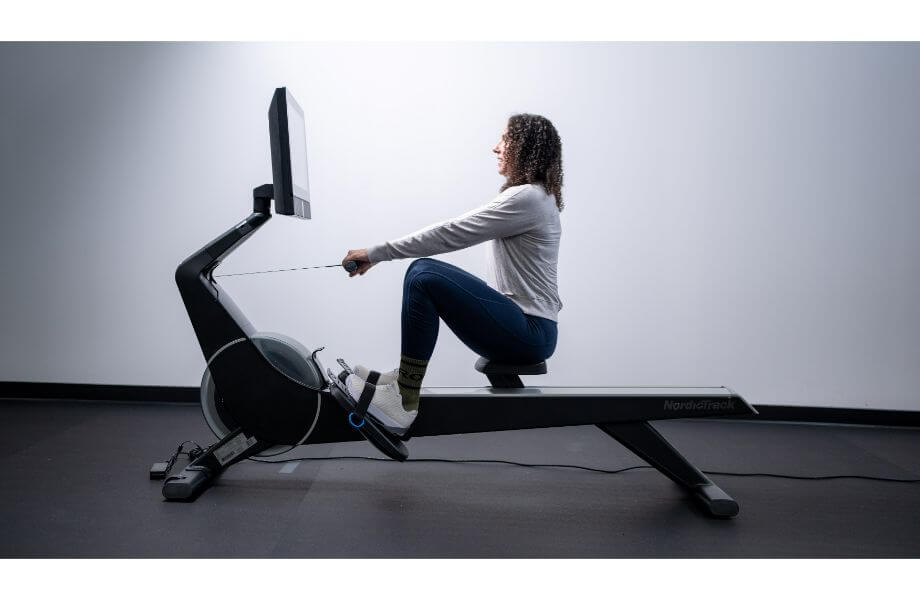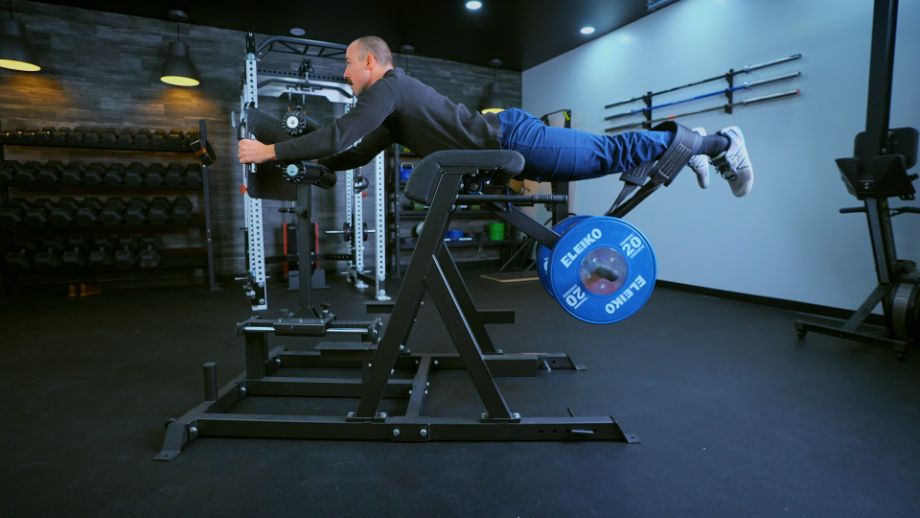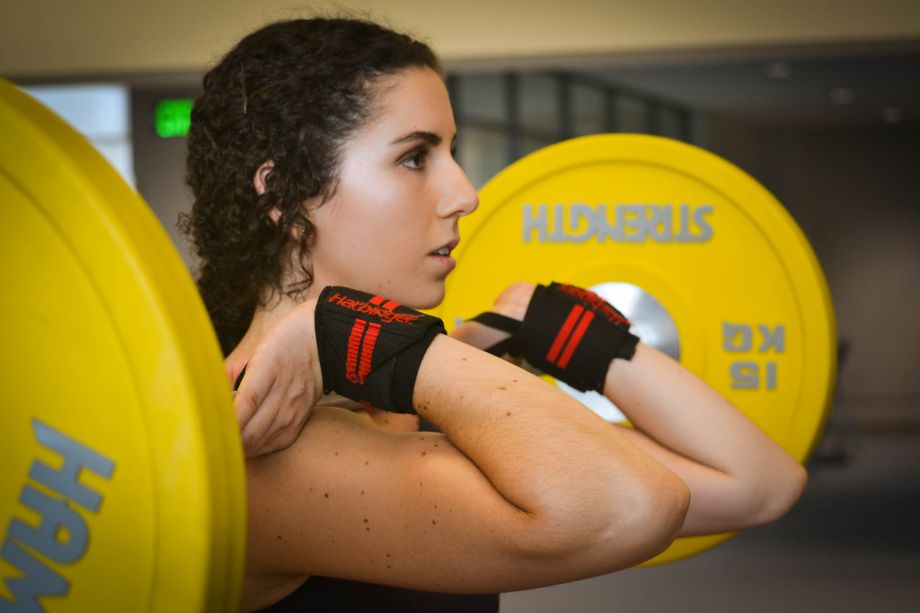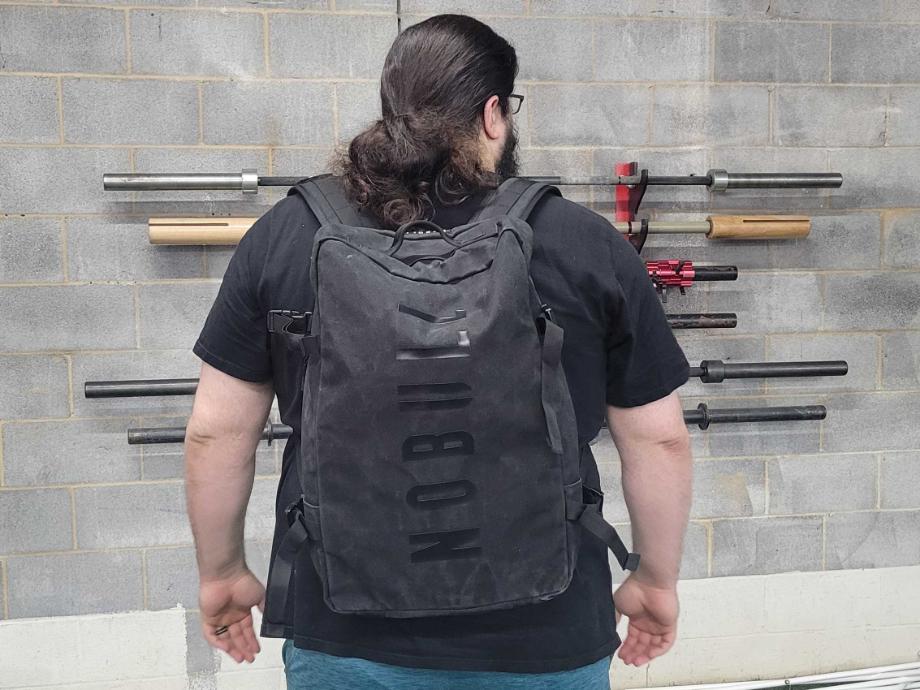Short on time? Try our 10- and 20-minute rowing HIIT workouts for maximal results in minimal time.
If you’re looking for a great workout, interval training is it. High-intensity interval workouts (HIIT) can burn more calories in less time than moderate exercise, while also improving your conditioning and endurance—and providing the same heart-health benefits of other cardio exercises.
HIIT rowing sessions, specifically, are a low-impact way to reap all the benefits of HIIT training without the excess pressure on your joints that can come with higher-impact workouts, like sprinting or jumping rope. And in addition to getting your heart rate up, a HIIT rowing machine workout is full-body exercise, targeting various muscle groups in both your upper and lower body, as well as your core.
We’ve put together two quick HIIT rowing workouts—20 minutes and 10 minutes—that can work for all fitness levels. (Note: If you’re a beginner, focus on perfecting your rowing technique before ramping up intensity.) All you need is a rowing erg and your A game.
RELATED: Best Rowing Machine
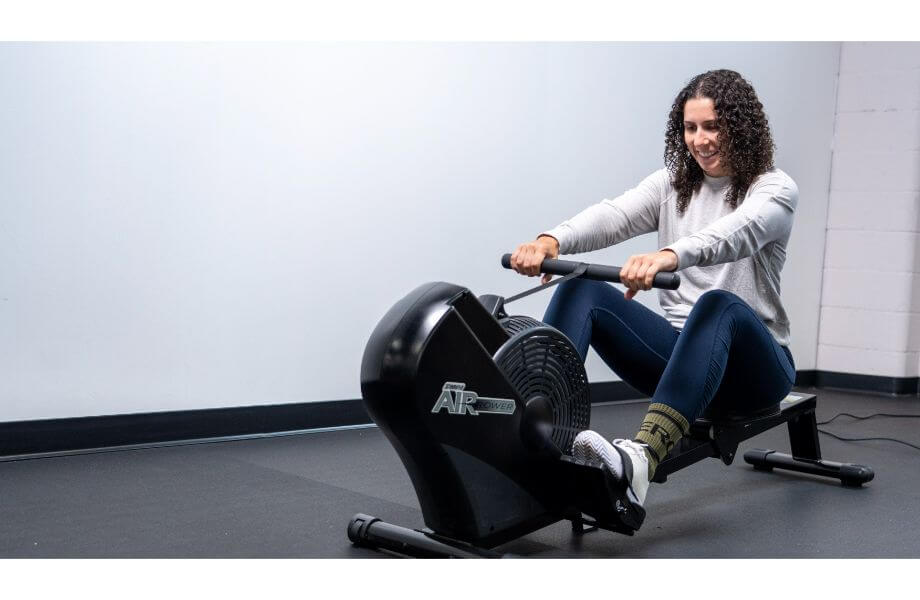
20-Minute HIIT Rowing Workout
If you have time for a 20-minute row, this workout gets your heart pumping in no time. Before jumping into each workout routine, make sure you’re warming up properly and don’t forget to breathe—the National Academy of Sports Medicine recommends breathing in and out through your nose during lower-intensity intervals and through the mouth as intensity picks up.
Keep in mind, these stroke rates and 500-meter split paces are suggestions, and you can alter them to create a vigorous effort for you.
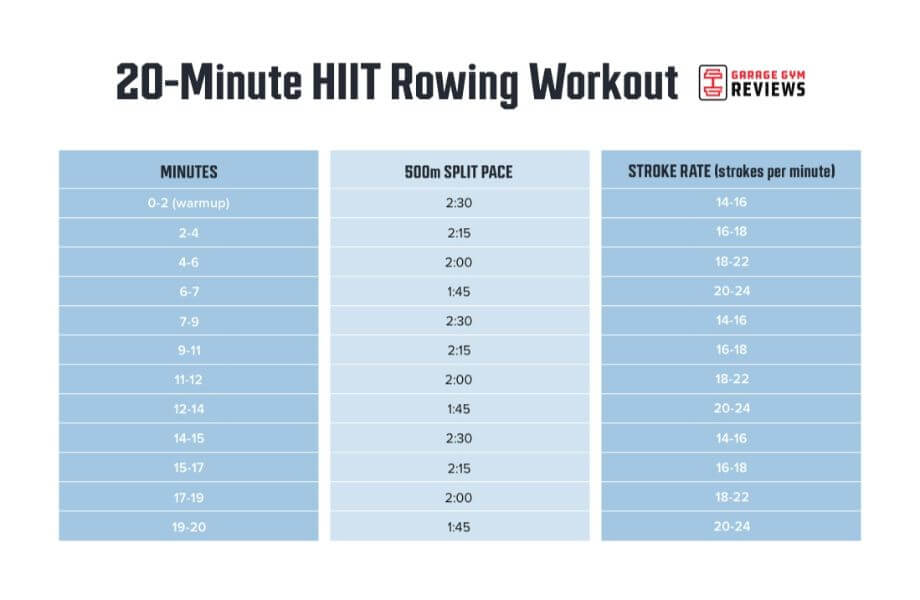
| Minutes | 500m Split Pace | Stroke Rate (Strokes Per Minute) |
| 0-2 (warmup) | 2:30 | 14-16 |
| 2-4 | 2:15 | 16-18 |
| 4-6 | 2:00 | 18-22 |
| 6-7 | 1:45 | 20-24 |
| 7-9 | 2:30 | 14-16 |
| 9-11 | 2:15 | 16-18 |
| 11-12 | 2:00 | 18-22 |
| 12-14 | 1:45 | 20-24 |
| 14-15 | 2:30 | 14-16 |
| 15-17 | 2:15 | 16-18 |
| 17-19 | 2:00 | 18-22 |
| 19-20 | 1:45 | 20-24 |
10-Minute HIIT Rowing Workout
This workout follows a similar format, but cuts the time down to 10 minutes. As with all HIIT workouts, make sure to warm up and cool down.
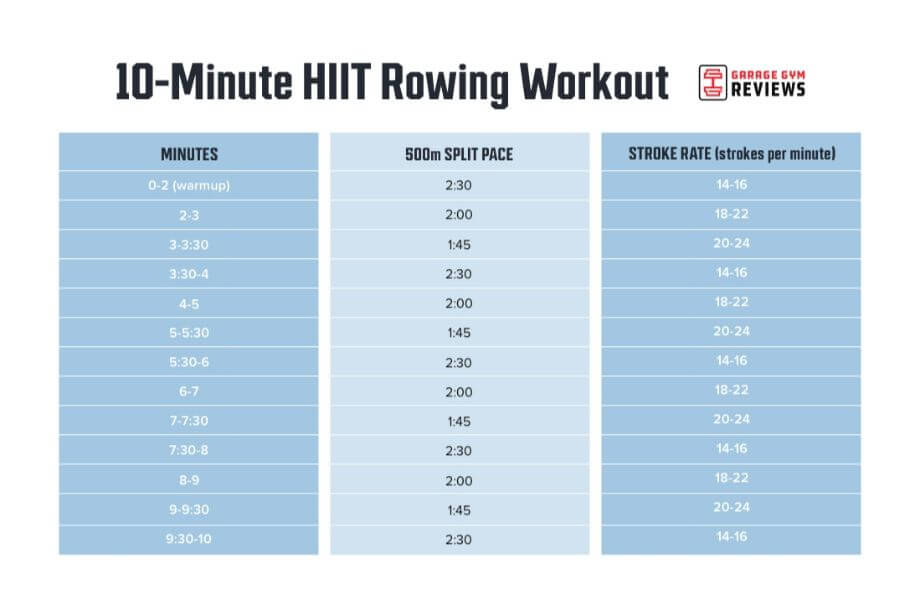
| Minutes | 500m Split Pace | Stroke Rate (Strokes Per Minute) |
| 0-2 (warmup) | 2:30 | 14-16 |
| 2-3 | 2:00 | 18-22 |
| 3-3:30 | 1:45 | 20-24 |
| 3:30-4 | 2:30 | 14-16 |
| 4-5 | 2:00 | 18-22 |
| 5-5:30 | 1:45 | 20-24 |
| 5:30-6 | 2:30 | 14-16 |
| 6-7 | 2:00 | 18-22 |
| 7-7:30 | 1:45 | 20-24 |
| 7:30-8 | 2:30 | 14-16 |
| 8-9 | 2:00 | 18-22 |
| 9-9:30 | 1:45 | 20-24 |
| 9:30-10 | 2:30 | 14-16 |
Benefits of Rowing
Rowing is an excellent form of cardiovascular exercise, but it also serves as moderate strength training since you’re working against the resistance of a flywheel, according to Amanda Capritto, Garage Gym Reviews fitness writer, certified personal trainer, and health coach.
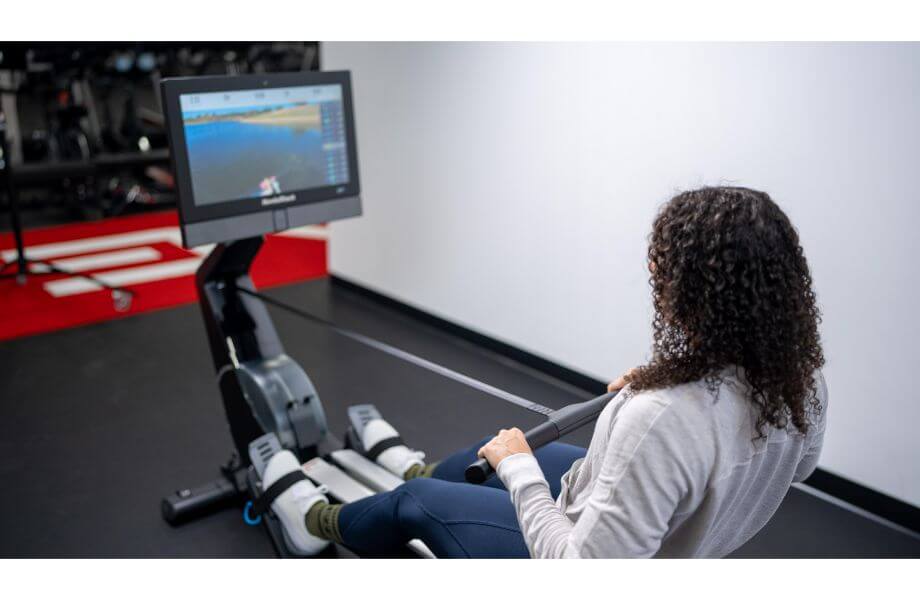
Like all cardio workouts, rowing can improve heart and metabolic health, increase endurance, and contribute to weight loss and/or maintenance, as long as it’s combined with other healthy habits like eating nutrient-dense foods, getting enough sleep, and staying hydrated, she says.
Another standout benefit of rowing is that it’s low-impact. Because of this, rowing is easier on your joints than other forms of higher-impact cardio (running and plyometrics, for example).
Benefits of HIIT Training
HIIT workouts are some of the most effective workouts you can do, according to Amanda, who adds that there’s no shortage of scientific literature pointing out its benefits.
“Not only do HIIT workouts burn more calories in less time than other types of workouts, but they also improve standard markers of health associated with steady-state cardio exercise in less time, including reduced resting blood pressure, improved VO2 max (What is Vo2 Max?), improved body composition, and improved metabolic health,” she says.
Over time, HIIT sessions, especially those that are full-body workouts, can increase your resting metabolic rate and contribute to fat loss and muscle gain.
RELATED: HIIT Elliptical Workouts
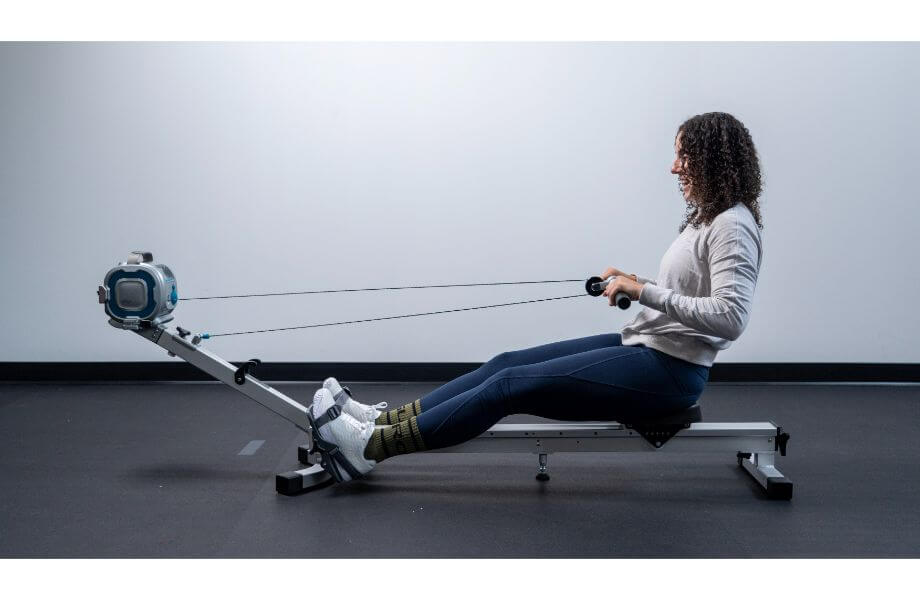
What Is HIIT Rowing?
Similar to a HIIT bike workout, HIIT rowing is simply rowing that follows the principles of high-intensity interval training—a training technique that alternates between brief periods of speed (or intensity) and periods of rest, according to the American Council on Exercise.
The American College of Sports Medicine adds that the periods of intensity are generally performed at 80% to 95% of your maximal heart rate (the maximum number of times your heart will beat in a minute without overexertion), while the recovery periods are usually performed at 40% to 50% of maximal heart rate.
On the other hand, steady-state rowing is rowing that’s performed for a given amount of time at a constant pace.
“Steady-state cardio is usually performed at around 60% to 70% of your maximal heart rate. It should be a challenging but doable pace you can maintain for 20 minutes or more,” says Amanda.
One of the most common misconceptions about HIIT is that it has to be high-impact, but it doesn’t; it’s all about intensity, not impact. The periods of speed and recovery can also be the same duration—again, it’s all about the intensity of the effort.
To better understand what HIIT intensity feels like, you shouldn’t be able to hold a conversation or continue the effort past the work interval—you really should be emptying the tank during the work intervals.
HIIT Rowing FAQs
How do you do HIIT rowing?
“A rowing machine HIIT workout should follow the basic principles of HIIT: an intense working period followed by a recovery or rest period,” says Amanda, adding that any interval formats would fit the bill:
1-to-1 intervals (e.g., 1 minute of work, 1 minute of rest);
Tabata (20 seconds of work, 10 seconds of rest);
EMOMs (every minute on the minute);
Ascending or descending intervals (e.g., 1 minute slow, 30 seconds moderate, 15 seconds fast).
There’s no universal definition of HIIT, nor any parameters that dictate what is and what isn’t HIIT—as long as you’re repeating intense efforts followed by recovery periods, you’re in the realm of high-intensity interval training. That said, HIIT workouts should be so intense that you can’t perform 30 minutes or more of the effort. You should be running on E every time you finish a work interval.
RELATED: Tabata Timer
Can beginners do HIIT rowing?
Beginners can certainly do HIIT rowing, but Amanda encourages anyone starting out to focus on perfecting their rowing form and technique with slow, steady sessions before jumping into more vigorous workouts. And don’t do too much, too fast.
“Aside from form, the most important thing for beginners to keep in mind is that you can do too much HIIT and risk overtraining,” she says. “I recommend beginners keep HIIT rowing workouts to 15 minutes or less, and start with just one per week, working up to three over the course of several weeks.”
RELATED: Rowing Machine Workouts
Is 20 minutes of rowing enough?
Twenty minutes of indoor rowing (whether that’s HIIT rowing workouts or steady-state rowing) is enough to reap some benefits, but the most important thing is consistency over time, says Amanda.
“Rowing for 20 minutes once won’t do much except produce temporary benefits such as elevated mood, but rowing for 20 minutes, five days per week, for several months will certainly produce long-term benefits like improved cardiovascular endurance, metabolic health, and body composition,” she says.
Exercise isn’t the only factor that comes into play though; it’s also important to eat a nutrient-dense diet, get adequate amounts of sleep, and find ways to manage your stress.
How often should you do HIIT workouts?
Amanda recommends that most people limit HIIT workouts to a max of three sessions per week, which is plenty of exercise if you’re incorporating other workouts, like strength training and steady-state cardio, too.
“Because HIIT workouts require such vigorous efforts, they can lead to overtraining syndrome more quickly than other types of exercise—this is true whether your HIIT includes cardio only or also includes resistance training,” she says.
And the American Council on Exercise agrees, stating that just one to two high-intensity workouts per week is enough to reap the benefits while mitigating the risk of injury.


